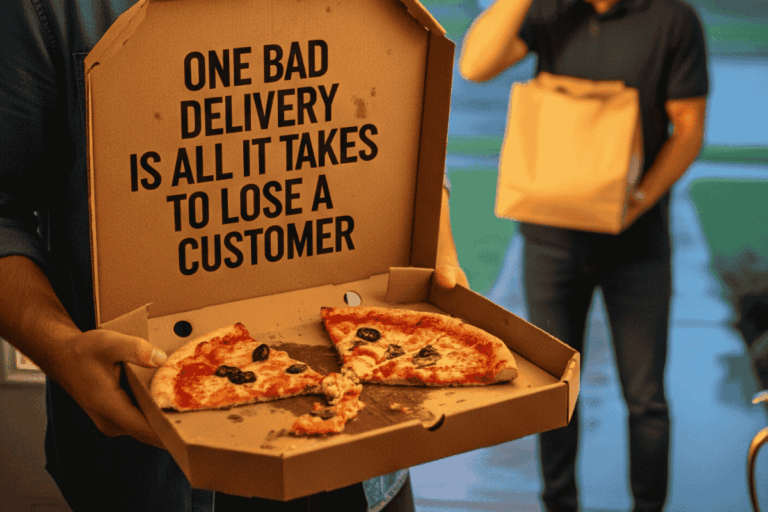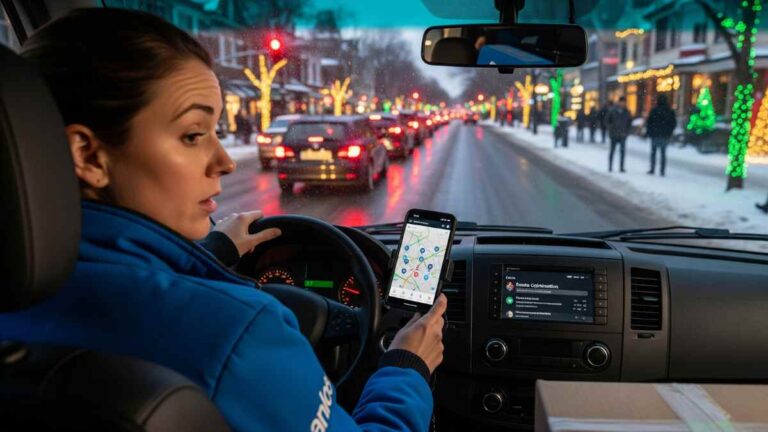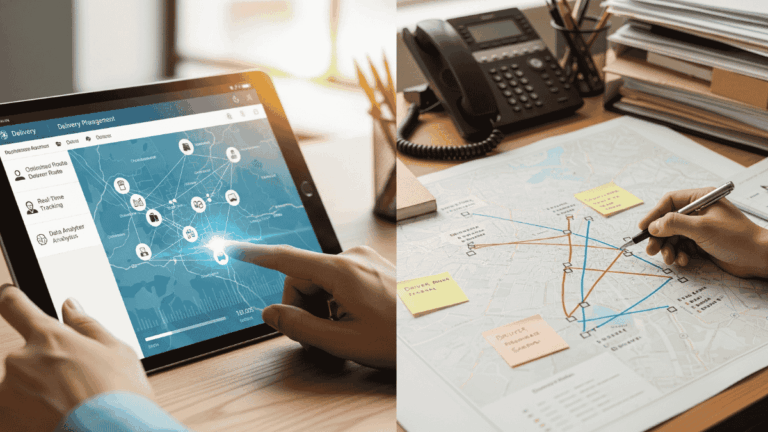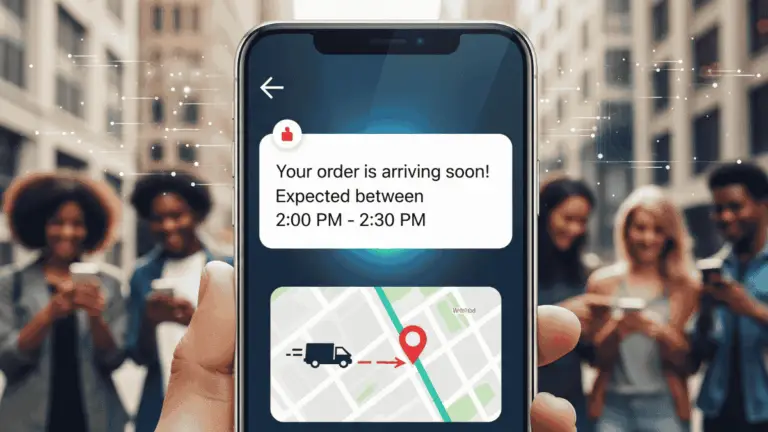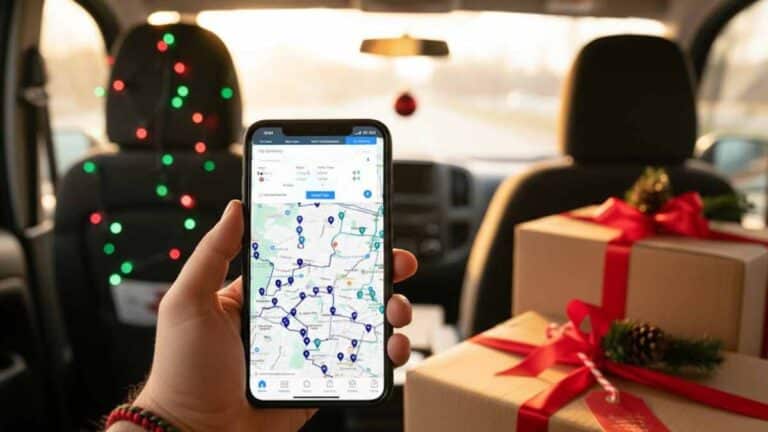Delivering products swiftly and efficiently to the customer’s doorstep has become a critical aspect of the logistics industry. As businesses strive to meet the growing demands of e-commerce and online shopping, optimizing the last-mile delivery process has become a key priority. To achieve this, monitoring and analyzing the right metrics is essential. In this article, we will explore the top 10 last-mile delivery metrics to monitor in 2023 and delve into the importance of these metrics in ensuring the best last-mile delivery experience for customers.
We will delve into the concept of the “best last-mile delivery” and what it entails for businesses. The best last-mile delivery is characterized by timely, accurate, and cost-effective deliveries that exceed customer expectations. Achieving this level of service requires a deep understanding of the key metrics that drive success in the last-mile delivery process.
As we explore each of the top 10 last-mile delivery metrics to monitor in 2023, we will discuss their definitions, calculations, and significance. Additionally, we will provide strategies and best practices for improving performance in each metric. By the end of this article, businesses will have a comprehensive understanding of the key metrics they need to monitor in 2023 to achieve the best last-mile delivery outcomes.
Let’s get into it!

Top 10 Last-Mile Delivery Metrics to Monitor in 2023
Let’s dive into the top 10 last-mile delivery metrics to monitor in 2023.
Key Metric 1: On-Time Delivery Rate
On-Time Delivery Rate Definition and Calculation
The percentage of deliveries that are finished within the given or anticipated delivery window is measured by the on-time delivery rate. It is derived by multiplying the percentage of timely delivery by the total number of deliveries.
The value of prompt deliveries in ensuring customer satisfaction
To guarantee client satisfaction, delivery must be made on time. Customers anticipate their orders to arrive when they are supposed to, and any delays can cause annoyance and damage the company’s reputation. Deliveries that arrive on schedule improve the client experience, foster trust, and raise the possibility of repeat business.
Techniques for Increasing the On-Time Delivery Rate
Businesses can use tactics including route planning optimization, real-time tracking technologies, better inventory management, and improved customer communication to increase the percentage of deliveries that arrive on time. Companies can improve their on-time delivery performance by simplifying procedures and removing any potential bottlenecks.
Key Metric 2: Delivery Cost per Mile
The Calculation of Delivery Cost Per Mile and Its Importance
Delivery cost per mile is a measurement of the costs associated with each mile traveled during last-mile delivery. It is determined by dividing the total cost of delivery by the distance traveled.
Delivery Costs Effect on Profitability
The profitability of last-mile delivery operations is significantly influenced by delivery costs. High delivery costs can reduce profit margins and threaten the viability of an enterprise. To ensure effective operations and have a healthy bottom line, monitoring and managing delivery costs is crucial.
Cost-Sharing Techniques for Effective Last-Mile Delivery
Businesses might investigate tactics including route optimization, load consolidation, effective vehicle selection, fuel efficiency measures, and efficient warehouse management to lower delivery costs. Companies can improve operational efficiency and cost-effectiveness in their last-mile delivery operations by putting cost-saving measures in place.
Key Metric 3: First-Time Delivery Success Rate
First-Time Delivery Success Rate Defined and Measured
The percentage of deliveries that are successfully made on the first try without the need for redelivery or return is measured by the first-time delivery success rate. It is determined by multiplying by 100, then dividing the number of first-time deliveries that were successful by the total number of deliveries.
Implications for repeat business and customer experience
Customer satisfaction and repeat business are directly impacted by the success percentage of first-time deliveries. Successful first-time delivery enhances customer satisfaction, fosters confidence, and raises the possibility that customers will make additional transactions. On the other hand, late or unsuccessful delivery may result in displeased customers, lost sales, and diminished client loyalty.
Increasing the Success of First-Time Deliveries Through Effective Planning and Communication
Businesses can concentrate on effective preparation and communication to increase the success percentage of first-time deliveries. This entails precise order processing, effective planning, precise delivery instructions, and proactive customer communication regarding delivery specifics and changes. Businesses can reduce instances of missed or failed deliveries and raise the overall success rate of first-time deliveries by optimizing certain parts of the delivery process.

Key Metric 4: Average Delivery Time
Determining and Explaining Average Delivery Time
The average delivery time is the time it typically takes for a delivery to travel from the dispatch site to the customer’s location. It is determined by adding together and dividing the total delivery times for all completed deliveries.
The connection between customer satisfaction and delivery time
Customer satisfaction is significantly influenced by delivery time. Customers anticipate timely and prompt deliveries, and they may become impatient and dissatisfied if delivery times take longer than expected. Improved customer satisfaction results from tracking and lowering the average delivery time, which also improves the customer experience and perception of the company.
Accelerating Delivery Time by Optimising Routes and Increasing Process Effectiveness
Businesses should concentrate on route optimization methods including using mapping tools, taking traffic patterns into account, and optimizing delivery sequences to reduce average delivery times. Deliveries can also be accelerated by streamlining internal processes, such as effective order processing and warehouse operations. Businesses may improve delivery speed and fulfill consumer expectations by optimizing processes and eliminating pointless delays.
Key Metric 5: Delivery Accuracy
Delivery Accuracy Definition and Evaluation
Delivery accuracy is the capacity to make accurate deliveries of the right goods to clients. By comparing the delivered goods to the customer’s order information, it is determined whether everything is accurate, complete, and in the expected condition.
How Reliable Deliveries Affect Customer Loyalty
Customer loyalty is significantly impacted by accurate deliveries. When clients receive their orders accurately and as anticipated, it improves their experience and increases their faith in the company. Delivery mistakes, such as missing things, erroneous products, or damaged goods, on the other hand, can result in consumer annoyance, aggravation, and a loss of faith.
Putting Quality Control Measures Into Practice for Better Delivery Accuracy
Businesses can use quality control measures like order verification procedures, barcoding and scanning technology, standardized packing techniques, and extensive quality assurance checks to improve delivery accuracy. To further increase delivery accuracy, delivery staff should receive thorough training, and feedback from customers should be aggressively sought after. Businesses may reduce delivery errors and offer a higher level of accuracy and dependability by putting these procedures in place.
Key Metric 6: Score for Customer Satisfaction
Customer Satisfaction Measurement and Evaluation
Surveys, feedback forms, ratings, and reviews are just a few of the tools used to gauge customer satisfaction. With the use of these solutions, businesses may get direct client feedback and insights into how they feel about last-mile delivery services.
Analyzing client reviews, ratings, and comments allows for the measurement of customer satisfaction by determining the general degree of satisfaction. Businesses can quantify customer satisfaction and pinpoint areas for development by producing a customer satisfaction score.
Customer satisfaction and business success
Customer happiness and corporate success are intimately related. Customers who are happy with the service are more inclined to recommend the company to others and become repeat customers. They have a higher lifetime value since they keep making purchases and might recommend the company to others.
Customers who are not pleased, on the other hand, can hurt the company. Negative encounters can result in dropped sales, a tarnished reputation, and dwindling consumer loyalty. Customer retention rates, brand reputation, and total business profitability are all directly impacted by customer happiness.
Last-Mile Delivery Customer Satisfaction Enhancement Techniques
Businesses can use techniques like open communication, individualized customer service, delivery experience optimization, post-delivery feedback gathering, fostering continuous improvement, and putting in place rewards and loyalty programs to increase customer satisfaction in last-mile delivery. Businesses may generate great experiences and develop lasting customer relationships by placing a high priority on customer satisfaction and aggressively working to surpass consumer expectations.

Key Metric 7: Delivery Exceptions
Recognizing and Monitoring Delivery Errors
Any deviations or problems that occur throughout the delivery process are referred to as delivery exceptions. This may involve unsuccessful delivery tries, address mistakes, inaccessible areas, delivery refusals, or broken shipments. To comprehend the frequency and cause of these exceptions, it is crucial to recognize and monitor them.
Handling Frequently Occurring Delivery Exceptions for Easier Operations
Businesses can create plans to resolve and reduce typical delivery exceptions by analyzing them. This could entail enhancing address verification procedures, giving precise delivery instructions, streamlining delivery schedules, working with clients to determine desired delivery times, and putting emergency preparations in place. Common delivery exceptions that are resolved result in smoother operations, fewer interruptions, and higher customer satisfaction.
Reducing Delivery Exceptions by Taking Preventive Action
Companies can be proactive in reducing delivery exceptions. As part of this, thorough driver training programs, providing drivers with the tools and resources they need, putting in place real-time tracking and communication systems, and encouraging productive cooperation between driving teams and customer support teams are all included. Businesses can prevent or swiftly resolve delivery exceptions by proactively addressing potential issues, guaranteeing a flawless transaction.
Key Metric 8: Return Rate
Return Rate Calculation and Analysis
The percentage of delivered goods that end up being returned by customers is measured by the return rate. It is computed by multiplying by 100 after dividing the number of returned items by the total number of deliveries. Insights into product quality, consumer preferences, and potential operational inefficiencies can be gained by analyzing the return rate.
High Return Rates’ Effect on Operational Costs
For firms, high return rates can have a big financial impact. They raise the costs of handling returns, replenishing inventory, and potential product damage. Furthermore, high return rates could be a sign of deeper problems like flawed product descriptions, subpar quality assurance, or inefficient delivery procedures. It’s crucial for high return rates to be watched over and addressed.
Techniques to Lower Return Rates and Boost Productivity
Businesses should improve quality control procedures, improve packing to avoid damage, improve product descriptions and pictures to better meet customer expectations, and provide clear return policies and instructions to lower return rates. Additionally, return data analysis might reveal patterns or trends that enable companies to enhance product selection, delivery procedures, and customer communications using data.
Key Metric 9: Driver Performance
Monitoring and Assessing Driver Performance Indicators
Metrics for measuring driver performance evaluate the productivity and efficacy of delivery employees. On-time delivery rate, delivery accuracy, customer feedback ratings, and compliance with safety regulations are possible key metrics to monitor. Businesses may identify top drivers, give constructive criticism, and execute targeted training by tracking driver performance.
The significance of driving ability in last-mile deliveries
The performance of drivers, who represent the last-mile delivery service, directly affects how satisfied customers are. On-time deliveries, correct order fulfillment, and satisfying customer contacts are all benefits of having motivated and well-trained drivers. The total delivery experience is improved by tracking and optimizing driver performance, which also helps to maintain the company’s reputation.
Educating and Rewarding Drivers for Better Performance
Businesses should invest in thorough training programs that address customer service, safe driving techniques, efficient route planning, and problem-solving techniques to boost driver performance. Drivers might be inspired to thrive in their jobs by incentive programs like performance-based bonuses or recognition. Creating a nice work environment and offering ongoing assistance can also increase performance by boosting driver morale and job satisfaction.
Key Metric 10: Environmental Impact
Examining the Environmental Impact of Last-Mile Delivery
Evaluation of the last-mile delivery’s environmental impact is essential as sustainability gains importance. This entails assessing variables like carbon emissions, fuel usage, packaging waste, and the delivery operations’ total ecological impact. Businesses must monitor and measure the impact they have on the environment in order to find areas for improvement and introduce sustainable practices.
Environmental Impact Reduction Through Sustainable Practices
Businesses can implement a variety of sustainable strategies to lessen the last-mile delivery’s negative environmental effects. The use of eco-friendly automobiles or other forms of alternative transportation, the promotion of recyclable or biodegradable packaging materials, and the implementation of waste management systems are a few examples of how to do this. Moreover, working with sustainable logistics service providers and exploring innovative technologies like electric vehicles or drone delivery can further reduce the environmental footprint.
Promoting eco-friendly delivery methods in the final mile
To increase knowledge and promote sustainable behavior, businesses should actively promote eco-friendly projects. This can involve communicating their commitment to sustainability to customers, collaborating with suppliers to source environmentally friendly materials, supporting community recycling programs, and participating in carbon offset initiatives. Businesses can not only lessen their effect but also improve their brand name and attract environmentally concerned customers by exhibiting a strong commitment to environmental stewardship.

Top 10 Last-Mile Delivery Metrics to Monitor in 2023: Conclusion
Optimizing last-mile delivery is a critical aspect of the delivery business, and tracking key metrics plays a vital role in achieving success. By focusing on metrics such as fuel costs, fuel consumption rate, average service time, and last-mile delivery performance, businesses can make informed decisions to improve their operations and enhance customer satisfaction.
Efficiency is a key factor in the last-mile delivery process, directly impacting the overall customer experience. Utilizing last-mile delivery software and implementing route optimization strategies can effectively reduce fuel costs and improve fuel consumption rates, leading to cost savings and environmental sustainability.
Timeliness is of utmost importance in the last-mile delivery market. By monitoring average service time and prioritizing efforts to enhance last-mile delivery performance, businesses can minimize delays and ensure prompt deliveries to customers’ doorsteps. This contributes to higher customer satisfaction, increased loyalty, and a positive reputation for the delivery business.
To excel in the competitive last-mile delivery market, businesses need to streamline the entire delivery process. By adopting best practices, optimizing routes, and leveraging technology, they can improve efficiency, reduce costs, and enhance customer experiences. Data-driven decision-making based on the key metrics discussed enables businesses to stay ahead in the dynamic last-mile delivery industry.
Optimize your last-mile delivery operations with Locate2u
Ready to optimize your last-mile delivery operations? Schedule a demo with Locate2u today and discover how our innovative tracking and management software can streamline your processes, improve efficiency, and enhance customer satisfaction.

About the author
Marketing Coordinator at Locate2u having completed a Bachelor of Creative Arts, majoring in English Literature and Creative Writing. I have extensive experience in editing and proofreading, as well as creating content for a range of audiences.




